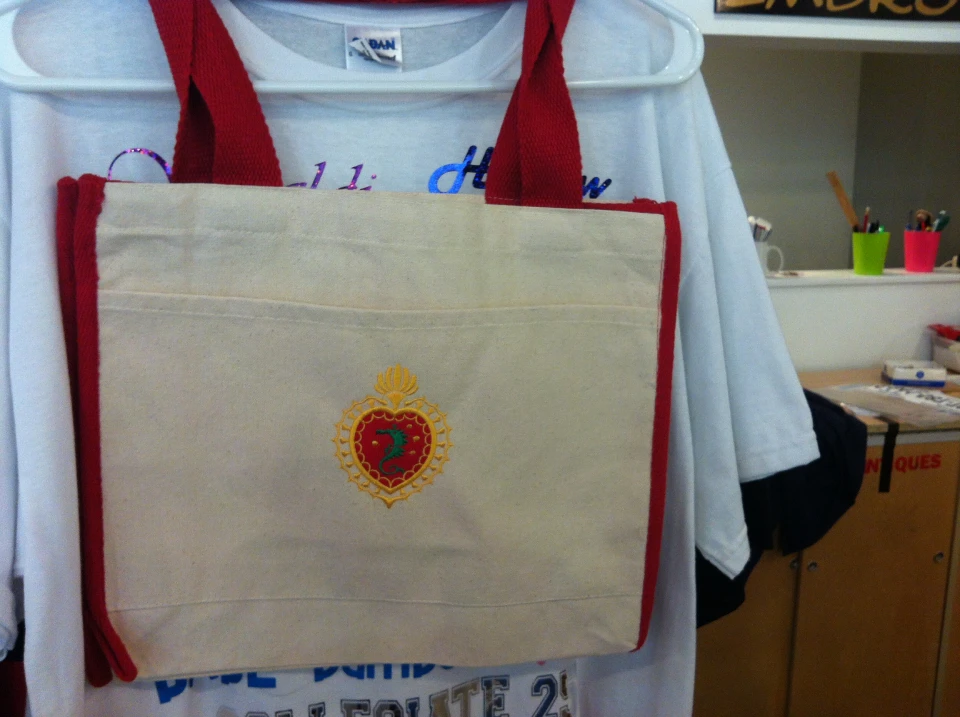The Art of Custom Embroidery: Opening the Keys to Creating Unique and Memorable Styles
Needlework, a craft soaked in custom and creativity, holds within its intricate stitches the power to transform material into a canvas of unique expression. The secrets to creating customized embroidery designs that mesmerize the eye and leave a lasting impression depend on a fragile equilibrium of method, imagination, and focus to information. As we dive right into the globe of customized embroidery, we discover the nuanced interaction between thread option, sew intricacy, and style personalization that elevates a simple garment to a masterpiece. Join us on a trip through the art of custom embroidery as we untangle the secrets behind crafting really unforgettable and distinctive productions.
Choosing the Right Embroidery Threads
When picking embroidery threads, what essential aspects should you consider to make sure the finest outcomes for your customized layouts? The choice of needlework string is vital in establishing the final outcome of your embroidered layout. One of the main considerations is the product of the thread. Different products such as cotton, polyester, rayon, and silk offer differing levels of sheen, durability, and texture. It is necessary to pick a thread product that enhances the material you are stitching on and straightens with the desired look of the layout.
Thicker threads can add dimension and appearance to your style, while finer threads are suitable for elaborate details and little text. In addition, taking into consideration the shade fastness and washability of the string is crucial to make certain that your custom designs maintain their quality and vibrancy over time.
Discovering Different Stitch Techniques
To dig into the realm of 'Discovering Different Stitch Methods', one must realize the complexities and subtleties that each stitching method brings to the art of embroidery. Various stitch techniques not just include visual interest but likewise contribute to the general appearance and dimension of the layout. One preferred stitch method is the satin stitch, which includes very closely packed parallel stitches to develop a smooth and glossy surface area, ideal for completing shapes and producing vibrant describes.
On the other hand, the backstitch is a functional technique often used for laying out and including great information. It involves stitching backwards to develop a strong line of embroidery. Furthermore, the French knot stitch adds a tactile aspect to layouts, ideal for developing textured accents like flower centers or ornamental touches.
Checking out various stitch methods enables embroiderers to have fun with light, darkness, and depth within their designs, raising the aesthetic appeal and creative high quality of their embroidery jobs. web By grasping various sewing techniques, one can unlock unlimited possibilities for producing special and memorable customized embroidery pieces.
Incorporating Personalized Design Elements
Having discovered the ins and outs of various stitch methods such as the satin stitch, backstitch, and French knot, the focus now changes in the direction of incorporating customized design components in customized embroidery tasks. Individualized layout aspects play a crucial function in making embroidery tasks absolutely unique and remarkable.
One more means to integrate personalized style components is by consisting of symbols or motifs that hold unique meaning to the recipient or show their interests and personality. Incorporating a preferred blossom, pet, or hobby-related sign can make the needlework design a lot more meaningful and customized. his comment is here In addition, selecting shades that resonate with the recipient or straighten with the intended style can better enhance the customization of the embroidery job.
Understanding the Art of Shade Coordination
One secret facet of color sychronisation is comprehending shade theory. This consists of understanding just how different shades engage with each various other, the emotions they communicate, and just how they can be integrated to develop aesthetically attractive styles. By using color concept principles, embroiderers can produce harmonious shade palettes that improve the overall look of the design.
In addition, focusing on contrast is crucial in color sychronisation. Utilizing contrasting colors can aid particular components of the style pop, boost legibility, and create a visually dynamic needlework item. By mastering the art of color sychronisation, embroiderers can raise their layouts and produce unforgettable pieces that reverberate with clients and audiences alike.
Enhancing Structure With Advanced Embroidery Stitches

French view knots, as an example, are perfect for adding little, raised dots to your layout, mimicking the look of beads or producing a distinctive surface area. Bullion knots, on the other hand, can be utilized to produce twisted, ropelike aspects that include an elegant feel to the needlework. Seed stitching includes tiny, scattered stitches that can complete areas with a multicolor appearance, while turkey work creates fluffy, dimensional accents reminiscent of animal fur or foliage. Trying out with these advanced embroidery stitches enables you to press the limits of standard embroidery and create genuinely special and aesthetically attractive structures in your styles.
Conclusion
In verdict, the art of custom-made embroidery includes a mix of selecting the right strings, checking out various stitch strategies, integrating customized style elements, understanding shade sychronisation, and enhancing appearance with advanced stitches. By understanding and applying these crucial elements, embroiderers can develop distinct and remarkable designs that showcase their creative thinking and skill. Embroidery fanatics can unlock the secrets to producing lovely and custom pieces that stick out and leave a lasting impact.